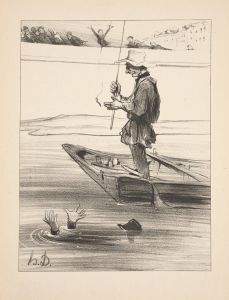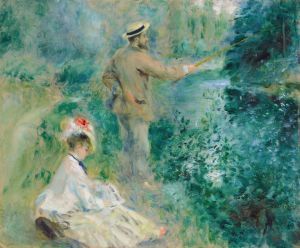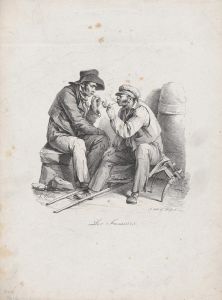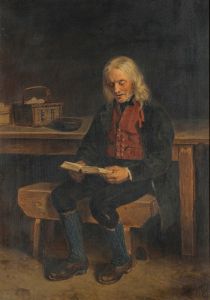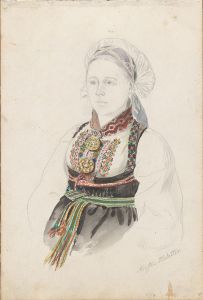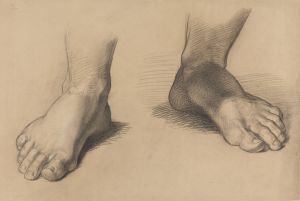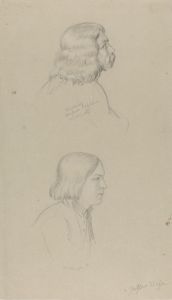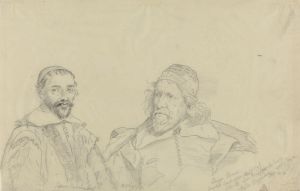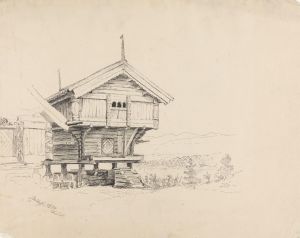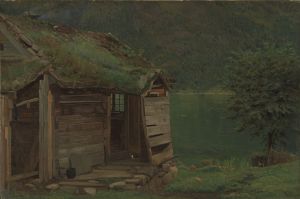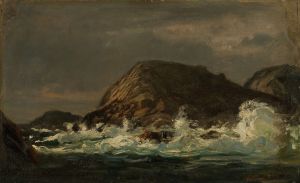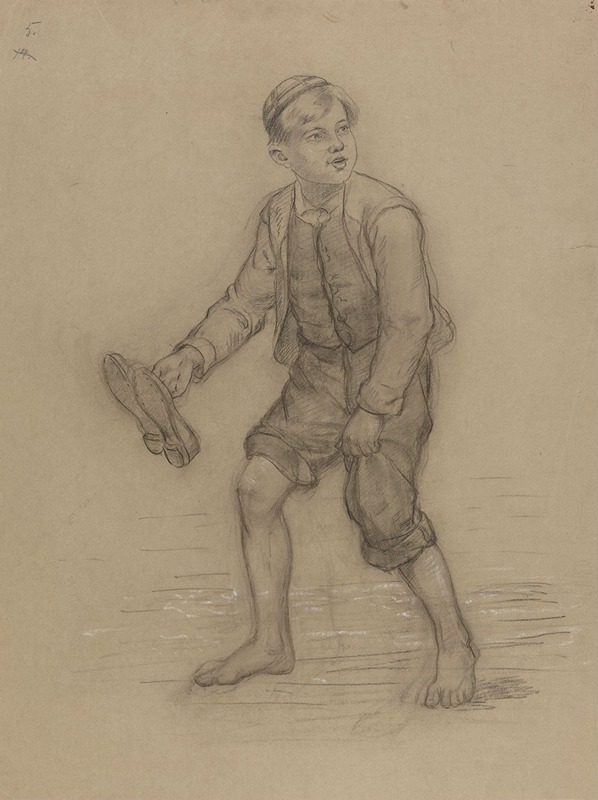
Gutt som vasser
A hand-painted replica of Adolph Tidemand’s masterpiece Gutt som vasser, meticulously crafted by professional artists to capture the true essence of the original. Each piece is created with museum-quality canvas and rare mineral pigments, carefully painted by experienced artists with delicate brushstrokes and rich, layered colors to perfectly recreate the texture of the original artwork. Unlike machine-printed reproductions, this hand-painted version brings the painting to life, infused with the artist’s emotions and skill in every stroke. Whether for personal collection or home decoration, it instantly elevates the artistic atmosphere of any space.
Adolph Tidemand (1814-1876) was a prominent Norwegian painter, best known for his detailed and romanticized depictions of Norwegian folk life and traditions. One of his notable works is "Gutt som vasser" (translated as "Boy Wading"), which showcases his skill in capturing the essence of rural Norwegian life.
"Gutt som vasser" was painted in 1855, during a period when Tidemand was deeply invested in portraying the everyday lives of Norwegian peasants. This painting is a fine example of his dedication to realism and his ability to infuse his subjects with a sense of dignity and simplicity. The artwork depicts a young boy wading through shallow water, likely in a rural setting. The boy is dressed in typical peasant attire of the time, which includes a simple shirt and trousers, and he is barefoot, emphasizing the connection to nature and the simplicity of rural life.
The background of the painting is characterized by a serene and natural landscape, with soft, muted colors that highlight the tranquility of the scene. Tidemand's use of light and shadow adds depth to the painting, creating a realistic and immersive environment. The boy's expression is one of concentration and innocence, capturing a moment of quiet contemplation as he navigates the water.
Adolph Tidemand's work, including "Gutt som vasser," played a significant role in the national romantic movement in Norway. This movement sought to celebrate and preserve Norwegian culture and heritage at a time when the country was experiencing significant social and political changes. Tidemand's paintings were instrumental in fostering a sense of national identity and pride among Norwegians.
Tidemand's attention to detail and his ability to convey the human experience through his art earned him widespread acclaim during his lifetime. He studied at the Academy of Fine Arts in Copenhagen and later in Düsseldorf, where he became associated with the Düsseldorf School of painting. This school emphasized meticulous detail and a realistic approach to art, which is evident in Tidemand's work.
"Gutt som vasser" is housed in the National Gallery in Oslo, Norway, where it continues to be appreciated by art enthusiasts and historians alike. The painting is a testament to Tidemand's skill as an artist and his commitment to capturing the spirit of Norwegian rural life. Through his work, Tidemand has left a lasting legacy that continues to influence and inspire the appreciation of Norwegian cultural heritage.
In summary, "Gutt som vasser" by Adolph Tidemand is a significant work that exemplifies the artist's dedication to realism and his ability to portray the simplicity and dignity of rural Norwegian life. The painting remains an important piece of Norway's national romantic movement and continues to be celebrated for its artistic and cultural value.





